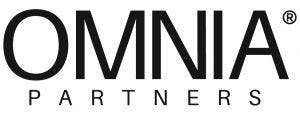
Omnia Partners
Purchasing Innovation: How Technology is Transforming Public ProcurementPurchasing Innovation: How Technology is Transforming Public Procurement
Technology is no longer a luxury in procurement—it’s a necessity. By embracing technological innovations, public sector organizations can achieve greater efficiency, transparency, and value. Whether through automation, AI, or ecommerce platforms, the tools are available to transform procurement into a strategic driver of success.
February 24, 2025

The Role of Technology in Procurement Transformation
1. Automation and Efficiency
Procurement professionals often juggle numerous tasks, from vendor management to compliance. Automation tools alleviate this burden by handling repetitive tasks such as purchase order generation, invoice processing, and contract management.
By freeing up time, professionals can focus on strategic initiatives like supplier collaboration and cost optimization instead of mundane tasks.
2. Enhanced Data Analytics
Data is the cornerstone of modern procurement. Analytics platforms now offer insights that were previously unimaginable, helping organizations identify spending patterns, forecast demand, and mitigate risks. For public sector entities, this means making more informed decisions that align with budget constraints and community needs.
3. AI and Predictive Analytics
Artificial intelligence (AI) goes beyond automation by learning and adapting to procurement trends. Predictive analytics powered by AI can forecast market fluctuations, identify the best suppliers, and suggest optimal contract terms. For instance, AI-driven solutions can alert procurement teams about potential supply chain disruptions before they occur, ensuring continuity of operations.
4. Cloud-Based Platforms
Cloud technology has made procurement more accessible and collaborative. Cloud-based procurement systems enable teams to work in real-time, regardless of location, ensuring seamless communication and streamlined workflows. Public sector organizations benefit significantly, as cloud platforms often integrate with other governmental systems, enhancing transparency and accountability.
5. Ecommerce Integration
The ecommerce model is no longer exclusive to the private sector. Public sector procurement is adopting e-commerce principles to simplify the purchasing process. With user-friendly interfaces and centralized catalogs, ecommerce platforms enable quicker, more efficient transactions while maintaining compliance with procurement regulations.
By integrating these advancements, public sector agencies can ensure that every dollar spent is being used effectively.
Overcoming Challenges with Technology
While technology offers vast potential, its adoption is not without challenges. Budget constraints, resistance to change, and the complexity of integrating new tools into existing workflows can hinder progress. However, the long-term benefits—cost savings, greater transparency, and improved service delivery—often outweigh the initial hurdles.
A Platform That Bridges the Gap
OMNIA Partners OPUS[ED1] is the only free ecommerce platform that provides public sector agencies access to hundreds of competitively solicited, publicly awarded cooperative contracts across all major categories.
Unlike traditional purchasing, OPUS allows you to research and buy from multiple suppliers with a single login and a single shopping cart, making it easier than ever to purchase the items you need.
Learn more about how OPUS can simplify your purchasing. Take an interactive tour or register now!










